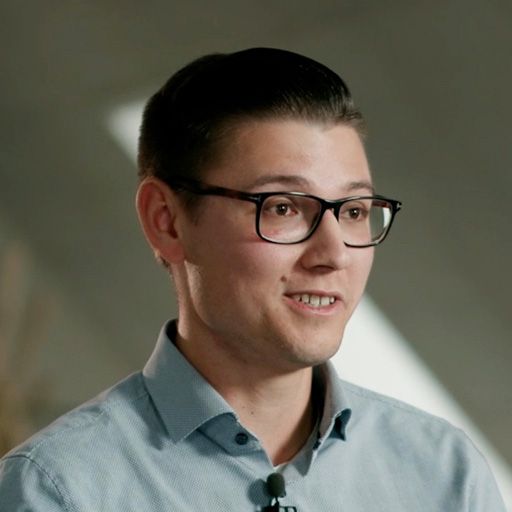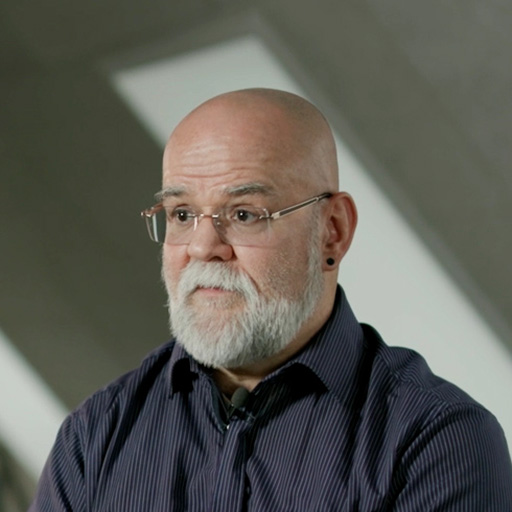Peter Trojer: UTM has used Clarity since 2005. We currently have 1,100 registered users on the platform, of which around 900 are project managers.
This one tool combines product development, investment planning, project management, and resource planning in one place.
Sebastian Kraus: The reasons why we migrated from on-premises to the itdesign SaaS solution were, on the one hand, to avoid an internal single source situation for our Oracle databases and, on the other hand, because we wanted to find internal expenditures that we could save on over the long term. Were there any costs that we could eliminate? What can we do to simplify a number of processes?
And here, too, we have simply reached the point where the cloud solution definitely future-proofs our operations and makes us more effective.
Sebastian Kraus: itdesign Clarity SaaS was our preferred solution from the beginning, because we naturally looked at the various benefits, and for us one thing was crucial: itdesign not only knows our Clarity, but also our internal processes and structures.
Peter Trojer: We had a relatively strong set of questions to answer about such issues as the network, Internet security, and data protection regulations. We had to undergo more audits. We had to wait for approvals. Then the approvals were issued.
But I was confident, because this wasn’t the first time itdesign had done this. And I have seen presentations with certificates where I said to myself: “If they can’t do it, then I don’t know how either.”
Sebastian Kraus: When looking at itdesign’s application management, various success factors were very important to us. On the one hand, we wanted very, very intensive and targeted support in order to ultimately realize our goal of two migrations, or two release jumps, per year. Of course, we also benefit from itdesign’s accumulated experience helping other customers and their excellent support.
Peter Trojer: Planning started about a year ago, and we can proudly say that after five months we were live and fully operational with all the themes. In the end we had no more issues that needed to be addressed or corrected. We were able to verify that we implemented the project on time, within budget, and within scope.
Peter Trojer: We had a planning phase. During this phase, we thought about where there might be potential pitfalls. We basically went directly from the planning phase to implementation. This worked on the corresponding test system. We were able to use the test system to process real data. After completing the test phase, we were able to go live without breaking a sweat.
Sebastian Kraus: In the end, the go-live day is the day everyone is working towards. At that time, we decided that during the downtime period of 8:00 AM to 6:00 PM Clarity would not be available, and of course we also communicated this to our users. We were even able to give our users the go-ahead two hours sooner than anticipated: “Clarity is back up again.”
The nice thing about it was that because we finished a little earlier, we actually got our first feedback on the day of the go-live. So, we knew: Yes, Clarity indeed works, and the users themselves actually notice: “Wow, the performance is better.”
Sebastian Kraus: It was definitely a very intense time, but I would also characterize it as a really effective collaboration.
I would describe our collaboration with itdesign as incredibly trusting and respectful. Our contacts were ready at all times with their absolute know-how and knowledge. And I think that’s what makes this collaboration so incredibly successful. And it is always important to never lose sight of having fun.
Sebastian Kraus: After almost half a year of working in Clarity in the cloud, I think we can draw a very, very positive overall conclusion.
In terms of performance, this means that it runs incredibly stable. We also had our initial experience that if something wasn’t running quite right in the background, we would be able to detect this fairly quickly. By this we mean that we’ve also had wonderful examples of an issue coming up before anyone was able to notice it on the surface.
Peter Trojer: We no longer worry about monitoring, dumping, and dashboarding. This is already done for us. We can get the information we need from the software. It is very satisfying. And what is great in terms of freeing up time and resources is that we can now devote ourselves to topics that we didn’t have time for before because we had to handle these topics on-premises.
Sebastian Kraus: I would definitely take the Clarity path to the cloud again in exactly the same form together with itdesign. We received full support from start to finish, from the planning to go-live phase. Everything was targeted to our needs and effectively tackled the issues.
Peter Trojer: When it comes to taking further steps in Clarity, tackling new topics, and taking on new challenges, we will definitely continue to partner with itdesign. That is a given. Any place, anytime!








